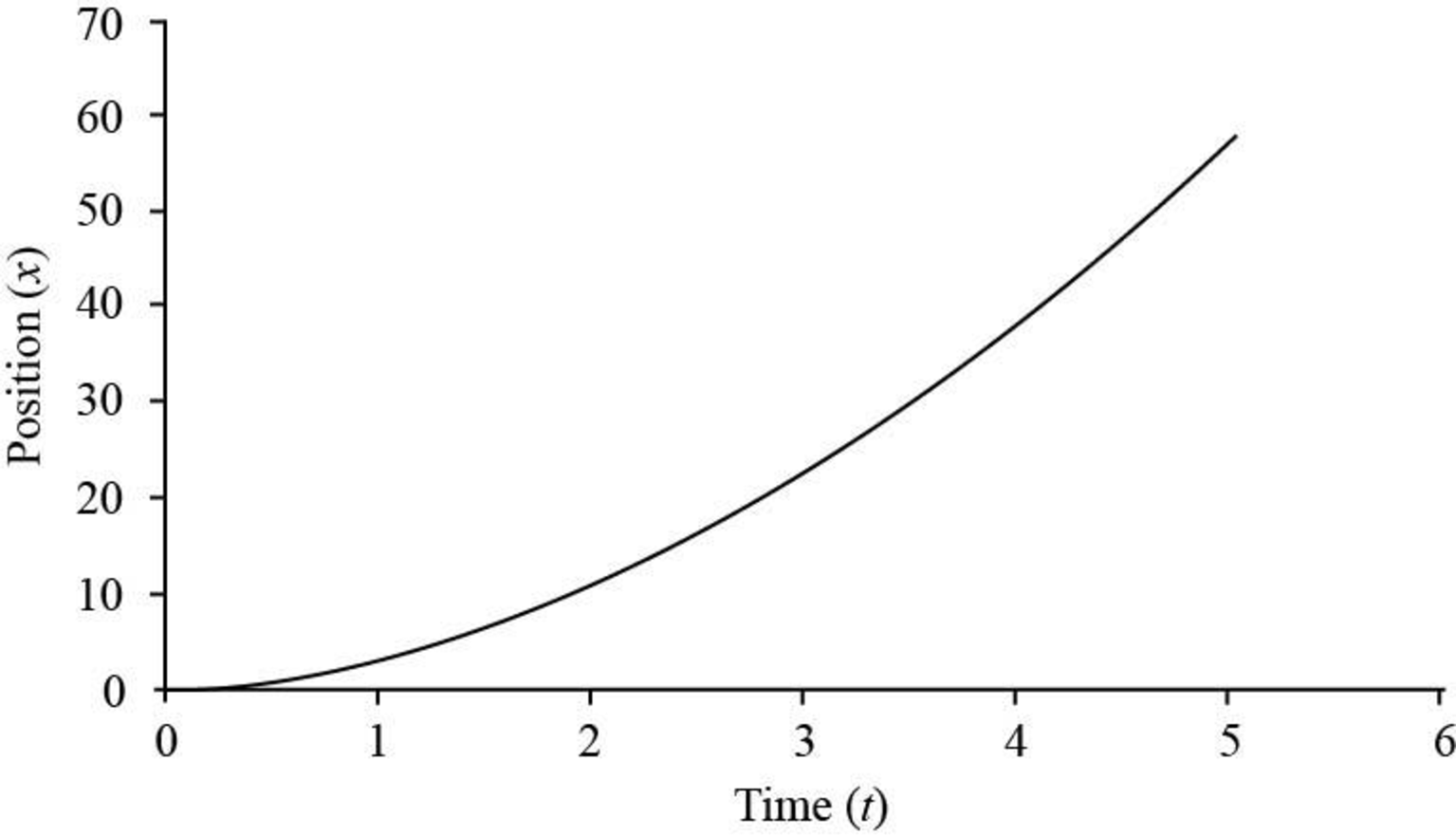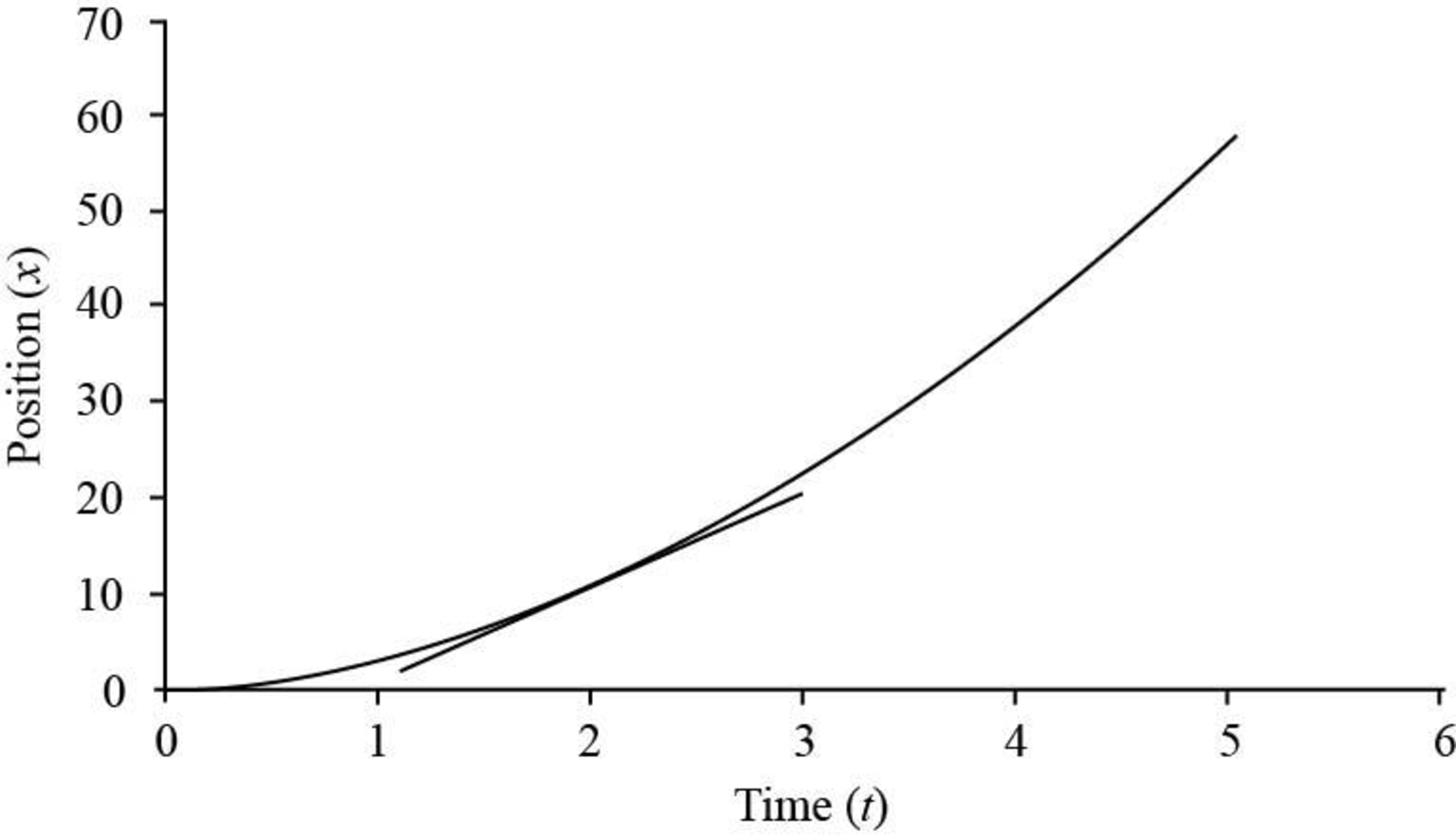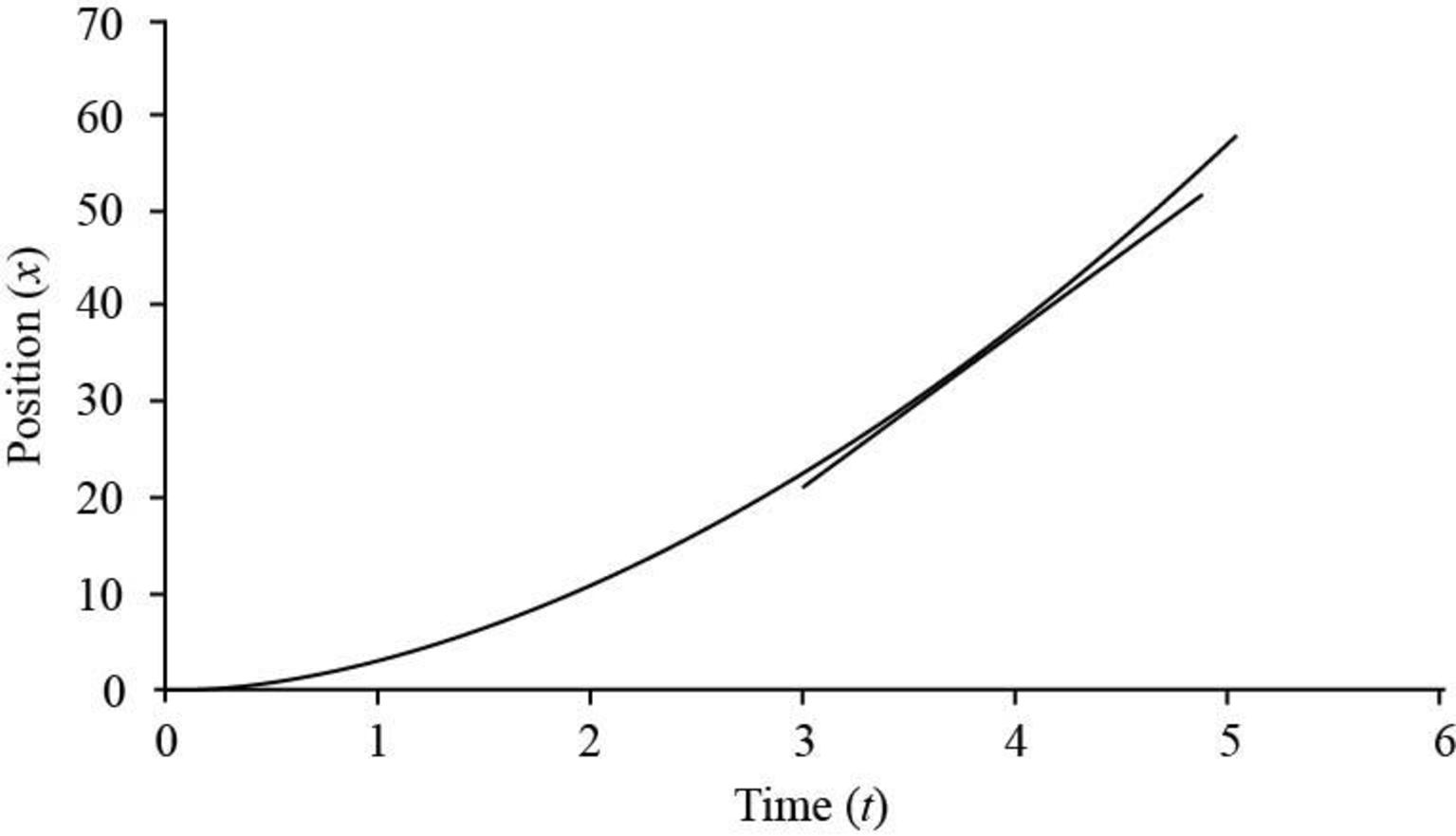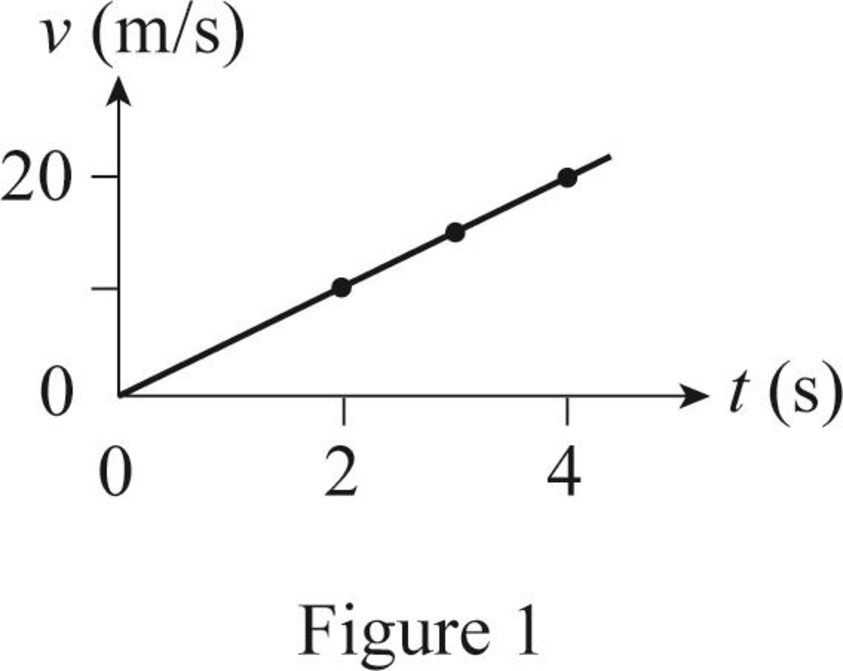
Concept explainers
(a) Use the data in Problem 3 to construct a smooth graph of position versus time. (b) By constructing tangents to the x(t) curve, find the instantaneous velocity of the car at several instants. (c) Plot the instantaneous velocity versus time and, from this information, determine the average acceleration of the car. (d) What was the initial velocity of the car?
(a)
The graph of position versus time.
Answer to Problem 10P
Therefore, the smooth graph of position versus time is shown in Figure I.
Explanation of Solution
The following table contains the data of position of the car at various time instants.
Draw the graph of position versus time for the derby car.

Figure I
In the shown graph, the position of the car at various time instants is plotted in the vertical axis against the time along horizontal direction.
Conclusion:
Therefore, the smooth graph of position versus time is shown in Figure I.
(b)
The instantaneous velocity of the car at various time instants.
Answer to Problem 10P
The instantaneous velocity of the car at
Explanation of Solution
The following table contains the data of position of the car at various time instants.
The instantaneous velocity is the slope of the tangent of the position versus time graph at an instant.
Formula to calculate the slope of the tangent is,
Here,
Draw the tangent line at the time instant of

Figure II
Substitute
Therefore, the instantaneous velocity of the car at
Draw the tangent line at the time instant of

Figure III
Substitute
Therefore, the instantaneous velocity of the car at
Draw the tangent line at the time instant of

Figure IV
Substitute
Therefore, the instantaneous velocity of the car at
Draw the tangent line at the time instant of

Figure V
Substitute
Therefore, the instantaneous velocity of the car at
Draw the tangent line at the time instant of

Figure VI
Substitute
Conclusion:
Therefore, the instantaneous velocity of the car at
(c)
The average acceleration of the car.
Answer to Problem 10P
The average acceleration of the car is
Explanation of Solution
The following table contains the instantaneous velocity of the car at various times instant.
The graph of instantaneous velocity versus time for the derby car is shown below.

Figure VII
The figure VII shows that velocity of the car increases linearly, it means the acceleration of the car is constant throughout the motion.
Thus, the slope of this graph gives the average acceleration of the car.
Formula to calculate the slope of versus time graph is,
Here,
Substitute
From the graph, the slope of the graph is
Conclusion:
Therefore, the average acceleration of the car is
(d)
The initial velocity of the car.
Answer to Problem 10P
The initial velocity of the car is zero.
Explanation of Solution
The equation for the velocity of the car obtained from the graph is,
The first equation of motion gives the velocity of an object at any instant.
Here,
Compare equation (I) and (II).
Thus, the initial velocity of the car is zero.
Conclusion:
Therefore, the initial velocity of the car is zero.
Want to see more full solutions like this?
Chapter 2 Solutions
PHYSICS FOR SCIENCE & ENGINEERS
Additional Science Textbook Solutions
MODERN PHYSICS (LOOSELEAF)
Lecture- Tutorials for Introductory Astronomy
Physics: Principles with Applications
Essential University Physics (3rd Edition)
College Physics (10th Edition)
The Physics of Everyday Phenomena
- The driver of a car slams on the brakes when he sees a tree blocking the road. The car slows uniformly with an acceleration of 5.60 m/s2 for 4.20 s, making straight skid marks 62.4 m long, all the way to the tree. With what speed does the car then strike the tree?arrow_forwardWhat expression in cartesian unit-vector notation for the average acceleration of the car during the given time period using the symbols be provided? And how does that help find the magnitude in m/s2 of the average acceleration of the car during the given time?arrow_forwardAn experimental rocket car starting from rest reaches a speed of 560 km/h after a straight 400-m run on a level salt flat. Assuming that acceleration is constant, (a) what was the time of the run, and (b) what is the magnitude of the acceleration?arrow_forward
- A body moves on a coordinate line such that it has a position s=f(t)=t2−8t+7 on the interval 0≤t≤7, with s in meters and t in seconds. a. Find the body's displacement and average velocity for the given time interval. b. Find the body's speed and acceleration at the endpoints of the interval. c. When, if ever, during the interval does the body change direction?arrow_forwardThe body, with an initial speed of 2 m/s, began to slide along an inclined plane. For l0s, it passes along an inclined plane of 50 m, and then along a horizontal plane to a stop of 90 m. Assuming the body movement in each of the sections to be equally variable, determine the speed of the body at the end of the inclined plane, acceleration on the inclined and horizontal sections of the path, and average speed along the entire path , body movement time.arrow_forwardWhich object, if either, has an acceleration with a greater magnitude during the time interval shown in the graph? If the accelerations have the same magnitude for both objects, indicate this explicitly?arrow_forward
- Show complete solution and draw the figure. If distance = t^2 - t^3, find the velocity when the acceleration is zero. a. v =1/3 c. v = 1/5arrow_forwardAn airplane starts from rest, travels 5000 ft down a runway, and after uniform acceleration, takes off with aspeed of 162 mi/h. It then climbs in a straight line with a uniform acceleration of 3 ft/s2 until it reaches aconstant speed of 220 mi/h. Draw the s-t, v-t and a-t motion graphs along with its piecewise function thatdescribes the motion. Show the complete solutionarrow_forwardA vehicle is running with uniform acceleration covers 450 m in a 5 second interval and further it covers 700 m in a 10 second interval. The acceleration of the vehicle isarrow_forward
- A motorist starts from rest at point A on a circular entrance ramp when t= 0, increases the speed of her automobile at a constant rate and enters the highway at point B . Knowing that her speed continues to increase at the same rate until it reaches 100 km/h at point C , determine (a) the speed at point B, (b) the magnitude of the total acceleration when t= 20 s.arrow_forwardA car is 126 m from a stop sign and traveling toward the sign at 29 m/s. At this time, the driver suddenly realizes that she must stop the car. If it takes 0.200 s for the driver to apply the brakes, what must be the magnitude of the constant acceleration of the car after the brakes are applied so that the car will come to rest at the stop sign?arrow_forwardA uniformly accelerated body takes 10 s to cover 500 m. Assuming that the body starts from rest, find (a.) its acceleration and (b.) the time it will take to cover the next 500 m.arrow_forward
 Principles of Physics: A Calculus-Based TextPhysicsISBN:9781133104261Author:Raymond A. Serway, John W. JewettPublisher:Cengage Learning
Principles of Physics: A Calculus-Based TextPhysicsISBN:9781133104261Author:Raymond A. Serway, John W. JewettPublisher:Cengage Learning
